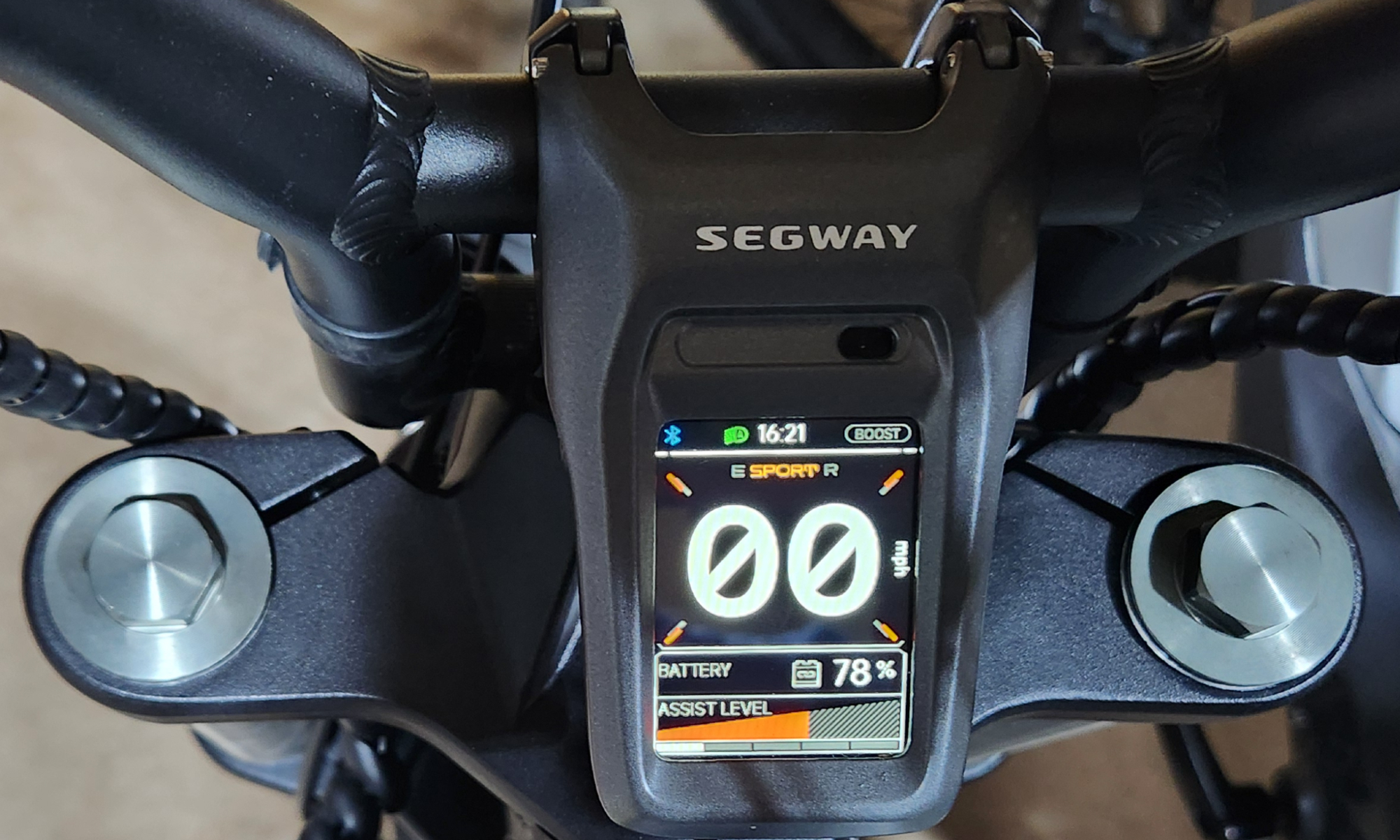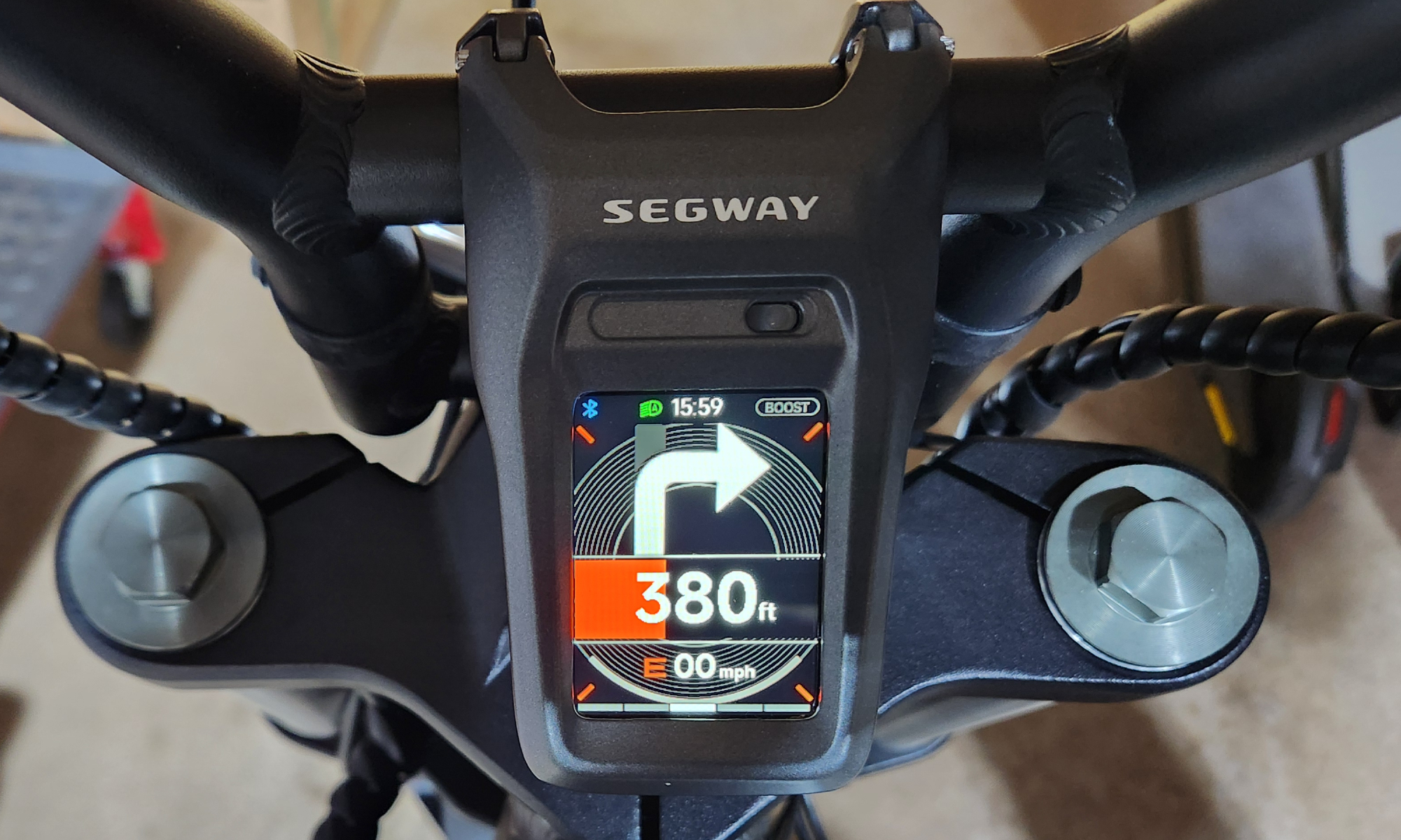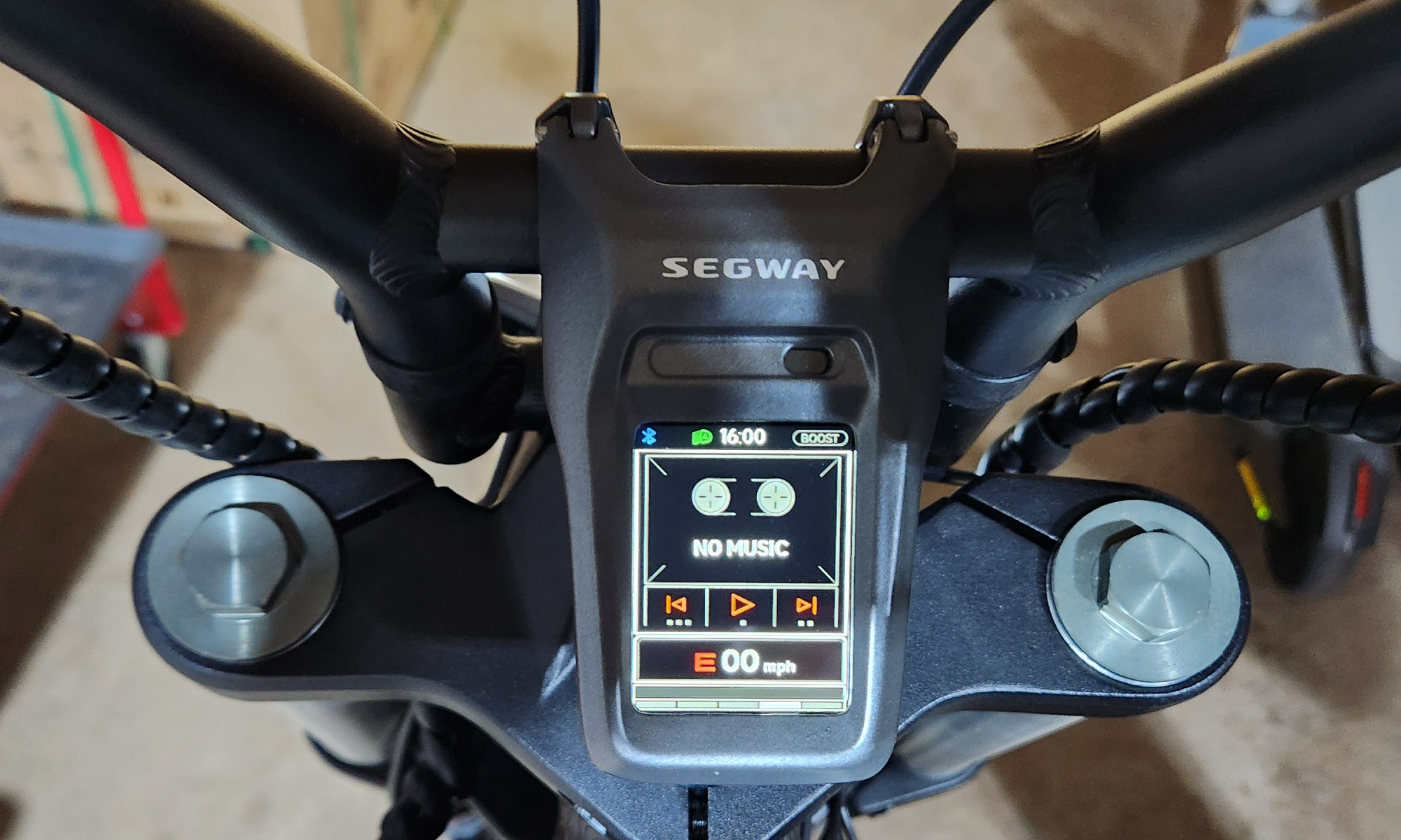Segway’s first U.S. e-bikes couldn’t be more different. The Xafari is a Class 2 step-through with a unique look and all-terrain capability. The Xyber, on the other hand, is a beast—an off-road-only powerhouse that looks like a full-blown motorcycle. Both are premium builds with high-end tech, including navigation, security features, and digital connectivity.
These are Segway’s first e-bikes for the U.S., but probably not the last. Segway-Ninebot is already a giant in micromobility—everything from scooters and go-karts to ATVs and those classic self-balancing rides.
Segway sent me both bikes to test. I rode them through town, across private roads, and out into the fields and woods near our place. I had an absolute blast.
Segway e-bikes: shared features
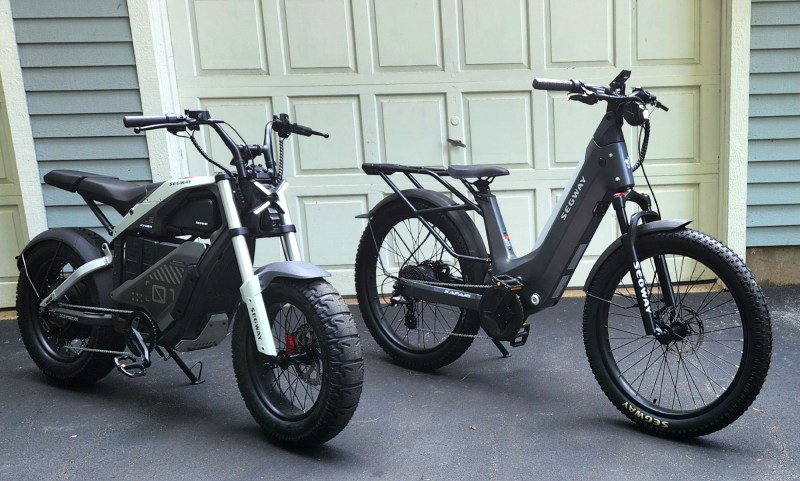
At first, I was mostly focused on power and handling—and both bikes deliver. Tons of torque, adjustable dual suspension, and chunky fat tires make for a confident ride. I’ll get into more specifics on each model below.
Yeah, they’re heavier than your average e-bike—especially the Xyber with both batteries—but that extra weight doesn’t hurt performance. If anything, it adds to the stable, planted feel on the road or trail.
Both bikes can handle off-road riding just fine if you’re veering off pavement, but they’re not built for technical trails or rock-hopping. They’re solid, capable, and have impressive range—but they’re not nimble.
If you want one, you’ll need to go through a dealer. You can order from Segway’s website, but pickup happens in person, fully assembled, at the nearest participating dealer.
Segway’s electronics are unparalleled
The tech on these bikes is seriously impressive. The three photos above show the Xyber’s display screens for riding stats, navigation, and music mode.
For navigation, Segway uses built-in GPS plus Apple Find My, so you can track the bike’s location through the Segway Mobility App. Turn-by-turn directions show up on both your phone and the bike’s display, and they’re easy to follow.
You can also control music and phone calls through the app, using the built-in speaker, which is way louder and clearer than I expected.
Security’s covered too. Segway’s Air Lock system automatically locks the handlebars and rear wheel when you walk away and unlocks when you return—no key needed. It’s great for quick stops at a café or store. Plus, the bikes are heavy enough that no one’s casually rolling off with one.
Segway Xafari e-bike
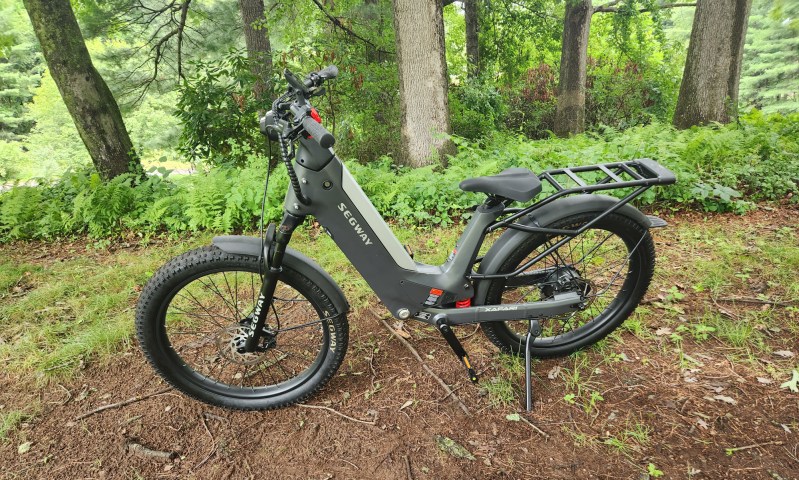
The Segway Xafari ships as a Class 2 e-bike, which means you get battery assist up to 20 mph—either by pedaling or using the thumb throttle. It also comes with an 8-speed Shimano Altus derailleur and shifter.
If you switch it to Class 3 mode, you can hit 28 mph, but only with pedal assist. No throttle allowed. Segway sticks closely to the rulebook here. A lot of other brands let you use the throttle up to 20 mph in Class 3, but technically, that’s outside the spec—and Segway doesn’t go there.
Honestly, it makes sense. These are Segway’s first e-bikes in the U.S., and they’re playing it safe. With more cities and states cracking down on speed limits and enforcement ramping up, it’s smart not to risk getting kicked out of major markets. Segway-Ninebot’s a global micromobility giant—why blow that over a few extra miles per hour?
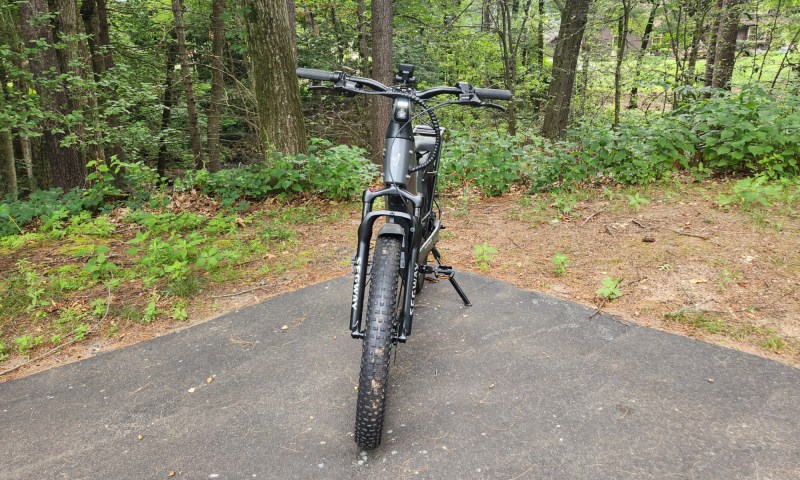
Segway rates the Xafari’s motor at 750 watts with up to 80 Nm of torque—and I can vouch for that. It powered straight up my long, steep driveway without breaking a sweat. The bike has 12 levels of pedal assist, controlled by a torque sensor that matches your pedaling force for a smooth, natural feel. It also uses a gyroscope to detect hills and automatically boost the power when you need it.
Segway says the Xafari can go from 0 to 20 mph in about five seconds, which feels about right from my rides.
The 48V, 19.5Ah battery holds 936 Wh of juice, and Segway claims a max range of 88 miles at a steady 12.5 mph. Like with any e-bike, actual range depends on speed, weight, terrain, and weather—but the Xafari definitely outpaces most single-battery setups.

Segway says the included 4A charger will top off the Xafari’s battery in about 5.3 hours.
The bike weighs 92.5 pounds with the battery installed and has a max payload of 352 pounds—that includes you, your gear, and anything you strap to the rear rack (which is rated for up to 55 pounds). The adjustable seat, stem, handlebars, and display make it easy to dial in the fit for riders between 5’1″ and 6’2″.

The Xafari rolls on 26×3.0-inch Kenda tires made specifically for Segway. The tread is moderately knobby for grip, but the slightly smoother centerline helps cut down on road noise and vibration. Paired with the dual suspension, the tires do a solid job of smoothing out bumps and rough patches.
Hydraulic disc brakes front and rear, with 180mm rotors, give you strong stopping power. The brake levers are responsive and can deliver full pressure when you need it.
The Xafari comes in silver or red and lists for $2,400—but Segway often runs sales on their site, so it’s worth checking.
Segway Xyber e-bike

I had fun riding the Xafari—it’s quick, comfortable, and handles well on and off-road. But I was even more excited about the Xyber. Honestly, the looks alone had me hooked. It’s aggressive, futuristic, and built like a beast.
And yes—it’s fast. Really fast. I’ll get to that in a second, but it’s important to note: the Xyber is officially sold as an off-road-only e-bike. That’s how Segway works around the standard U.S. e-bike performance limits.
High performance doesn’t come cheap. With a single 1,440 Wh battery, the Xyber delivers 3,000 watts of peak power and 120 Nm of torque—enough to snap you to 20 mph in just 2.7 seconds. That setup costs $3,300. Add the optional second battery for $1,100, and you unlock up to 6,000 watts and 175 Nm of torque, with a total price tag of $4,400.
The drivetrain is a direct drive—no gears or derailleur—but it offers 12 levels of pedal assist and three riding modes: Eco, Sport, and Race. All three modes top out at 35 mph, but the acceleration past 20 mph is more relaxed in Eco and Sport. There’s also a Boost mode, that is only available when both batteries are installed and fully charged—it gives you a short burst of max torque when you need it.
Around my yard and neighborhood, I mostly stuck with Eco. It was plenty. Sport gave me a little more juice when I had the room to ride above 20 mph. I tried Race mode and Boost mode just to see what they felt like—but they were more than I needed for casual riding.

The bike itself weighs 138 pounds with one battery, or about 165 pounds with two. Payload capacity is 396 pounds, and with both batteries installed, you can charge them simultaneously using the included 10-amp charger. Segway rates the range at 56 miles per battery, so 112 miles total with both. Segway doesn’t include passenger pegs with the Xyber, but there are threaded mounts on the frame. The Xyber’s weight capacity suggests it was designed to accommodate two-up riding.
The Xyber rolls on 20×5-inch fat tires with a smooth center tread for pavement and chunkier lugs on the sidewalls for grip. The dual-crown adjustable front suspension has 110mm of travel, and the 5-stage rear shock gives you 100mm. Hydraulic disc brakes include a four-piston front caliper with a 220mm rotor and a two-piston rear with a 180mm rotor.



